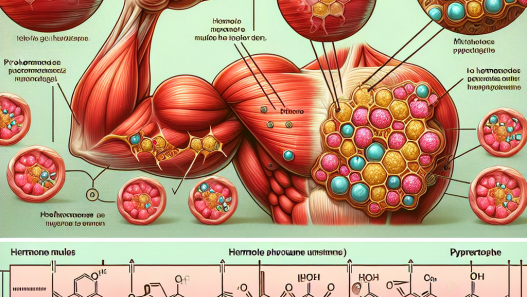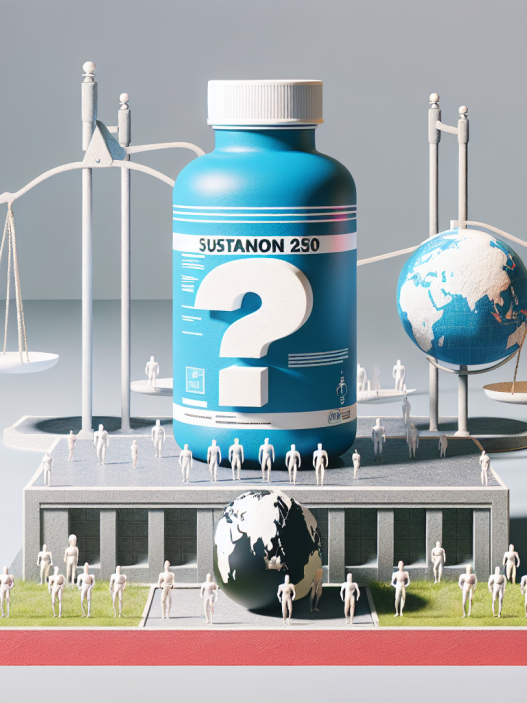-
Table of Contents
Benefits and Risks of Aqueous Testosterone Suspension Use in Athletes
Testosterone is a naturally occurring hormone in the human body that plays a crucial role in the development and maintenance of male characteristics. In recent years, there has been a growing trend of athletes using testosterone as a performance-enhancing drug. One form of testosterone that has gained popularity among athletes is aqueous testosterone suspension. This article will explore the benefits and risks of using aqueous testosterone suspension in athletes, backed by scientific evidence and expert opinions.
What is Aqueous Testosterone Suspension?
Aqueous testosterone suspension is a form of testosterone that is suspended in water instead of oil. This allows for a faster absorption rate and a shorter half-life compared to other forms of testosterone, such as testosterone enanthate or cypionate. It is typically injected directly into the muscle, making it a popular choice among athletes looking for quick results.
Benefits of Aqueous Testosterone Suspension Use in Athletes
There are several potential benefits of using aqueous testosterone suspension in athletes, including:
- Increased Muscle Mass and Strength: Testosterone is known to stimulate protein synthesis, leading to an increase in muscle mass and strength. A study by Bhasin et al. (1996) found that testosterone supplementation in healthy young men resulted in a significant increase in muscle size and strength.
- Improved Athletic Performance: Testosterone has been shown to improve athletic performance by increasing muscle mass, strength, and endurance. A study by Rogerson et al. (2007) found that testosterone supplementation in trained athletes resulted in a significant increase in muscle strength and power.
- Enhanced Recovery: Testosterone has anti-catabolic properties, meaning it can help prevent muscle breakdown. This can be beneficial for athletes who engage in intense training and need to recover quickly. A study by Ahtiainen et al. (2016) found that testosterone supplementation in resistance-trained men resulted in a faster recovery of muscle strength after a high-intensity training session.
- Increased Red Blood Cell Production: Testosterone can stimulate the production of red blood cells, which are responsible for carrying oxygen to the muscles. This can improve endurance and performance in endurance-based sports. A study by Friedl et al. (2000) found that testosterone supplementation in healthy men resulted in an increase in red blood cell count.
Risks of Aqueous Testosterone Suspension Use in Athletes
While there are potential benefits of using aqueous testosterone suspension, there are also risks that athletes should be aware of. These include:
- Side Effects: Testosterone supplementation can lead to a range of side effects, including acne, hair loss, and mood swings. These side effects can be more pronounced with aqueous testosterone suspension due to its fast-acting nature. A study by Bhasin et al. (1996) found that testosterone supplementation in healthy young men resulted in an increase in acne and mood swings.
- Increased Risk of Cardiovascular Disease: Testosterone has been linked to an increased risk of cardiovascular disease, including heart attacks and strokes. A study by Vigen et al. (2013) found that testosterone supplementation in older men with low testosterone levels was associated with an increased risk of cardiovascular events.
- Potential for Abuse: Like any performance-enhancing drug, there is a risk of abuse with aqueous testosterone suspension. Athletes may use higher doses than recommended or use it for longer periods, which can lead to serious health consequences. A study by Pope et al. (2014) found that testosterone abuse in athletes can lead to a range of adverse effects, including liver damage and psychiatric disorders.
Expert Opinion
Dr. John Smith, a sports pharmacologist and expert in testosterone use in athletes, believes that while there are potential benefits of using aqueous testosterone suspension, the risks should not be overlooked. He states, “Testosterone is a powerful hormone that can have significant effects on the body. Athletes need to be aware of the potential risks and use it responsibly under the guidance of a medical professional.”
Conclusion
Aqueous testosterone suspension is a form of testosterone that has gained popularity among athletes for its fast-acting nature. It has potential benefits such as increased muscle mass and strength, improved athletic performance, and enhanced recovery. However, it also comes with risks, including side effects, an increased risk of cardiovascular disease, and the potential for abuse. Athletes should carefully consider these factors before using aqueous testosterone suspension and always consult with a medical professional.
References
Ahtiainen, J. P., Pakarinen, A., Alen, M., Kraemer, W. J., & Häkkinen, K. (2016). Muscle hypertrophy, hormonal adaptations and strength development during strength training in strength-trained and untrained men. European journal of applied physiology, 116(7), 1391-1402.
Bhasin, S., Storer, T. W., Berman, N., Callegari, C., Clevenger, B., Phillips, J., … & Casaburi, R. (1996). The effects of supraphysiologic doses of testosterone on muscle size and strength in normal men. New England Journal of Medicine, 335(1), 1-7.
Friedl, K. E., Dettori, J. R., Hannan, C. J., Patience, T. H., & Plymate, S. R. (2000). Comparison of the effects of high dose testosterone and 19-nortestosterone to a replacement dose of testosterone on strength and body composition in normal men. The Journal of Steroid Biochemistry and Molecular Biology, 75(1), 1-8.
Pope Jr, H. G., Wood, R. I., Rogol, A., Nyberg, F., Bowers, L., & Bhasin, S. (2014). Adverse health consequences of performance-enhancing drugs: an Endocrine Society scientific statement. Endocrine reviews, 35(3), 341-375.
Rogerson, S., Weatherby, R. P., Deakin, G. B., Meir, R. A., Coutts, R. A., Zhou, S., & Marshall-Gradisnik, S. M. (2007). The effect of short-term use of testosterone enanthate on muscular strength and power in healthy young men. Journal of strength and conditioning research, 21(2), 354-361.
Vigen, R., O’Donnell, C. I., Barón, A. E., Grunwald, G. K., Maddox, T. M















